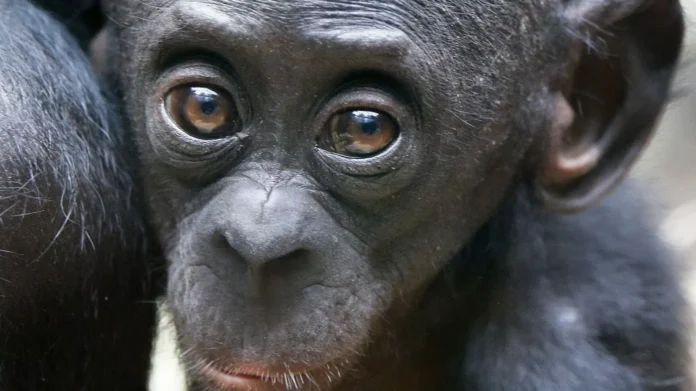Humans have always believed that they are the most intelligent species on the planet, capable of complex thought and communication. However, a new study has found that we may not be the only ones with this ability. According to findings published on Thursday in the journal Science, bonobo chimpanzees also possess the ability to combine calls to convey complex meaning, similar to how humans structure words to form phrases and sentences.
The study, conducted by researchers from the University of St Andrews and the Max Planck Institute for Evolutionary Anthropology, focused on the vocal communication of bonobo chimpanzees, also known as pygmy chimpanzees. These primates are closely related to humans, sharing approximately 98.7% of our DNA.
The researchers observed the vocalizations of bonobos in the Democratic Republic of Congo, paying particular attention to their use of calls and how they combined them to convey meaning. They found that the bonobos used a combination of three distinct calls – the “peep”, “hoo”, and “waa” – to form phrases and sentences with different meanings.
For example, when faced with food, the bonobos would make a series of “peep” calls to signal their desire to eat. However, when they were alarmed by a potential predator, they would combine the “peep” and “hoo” calls to convey a warning to others. The “waa” call was used to express distress or discomfort.
This ability to combine calls to convey different meanings is similar to how humans use words to form phrases and sentences to express complex thoughts and ideas. It suggests that bonobo chimpanzees possess a higher level of cognitive ability than previously thought.
The study also found that the context in which the calls were used played a crucial role in the meaning they conveyed. For example, a “waa” call could mean distress when used in a social context, but it could also mean excitement when used during play. This shows that bonobos not only use calls to convey meaning but also have an understanding of the social situation and the appropriate response.
These findings shed new light on the communication abilities of bonobo chimpanzees and challenge the notion that humans are the only species capable of complex thought and communication. It suggests that the ability to combine signals to convey complex meaning may have evolved independently in different species.
According to lead author Zanna Clay, “This study shows that bonobo chimpanzees are capable of combining calls to form more complex meaning, just like humans do with words. This challenges the idea that this ability is unique to humans and opens the door to further research on the cognitive abilities of other species.”
The study also has implications for our understanding of the evolution of language. It suggests that the building blocks of language, such as combining signals to convey meaning, may have developed earlier in our evolutionary history than previously thought.
Furthermore, the findings have important implications for the conservation of bonobo chimpanzees. These primates are classified as endangered, with only an estimated 20,000 individuals remaining in the wild. Understanding their communication abilities and how they form social bonds is crucial for their conservation.
In conclusion, the study shows that bonobo chimpanzees possess the ability to combine calls to convey complex meaning, challenging the belief that this ability is unique to humans. It highlights the importance of further research on the cognitive abilities of other species and has implications for our understanding of the evolution of language. This groundbreaking study reminds us that we are not alone in our ability to communicate and that other species may possess similar cognitive abilities.

